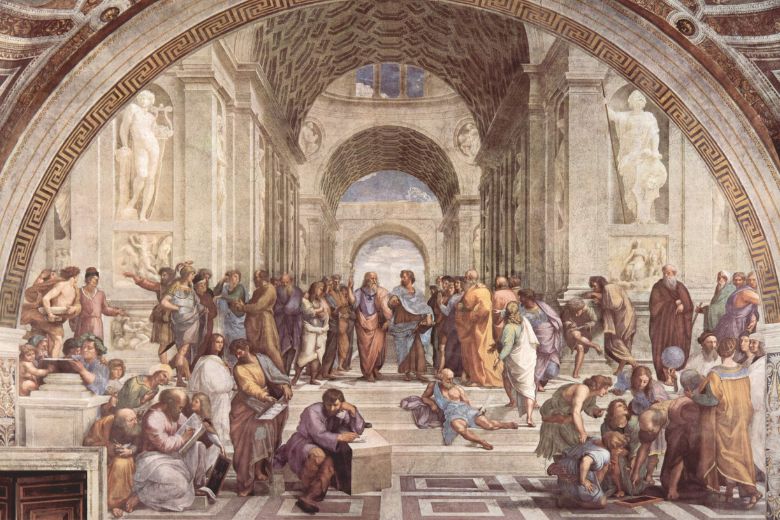How To Create DIY Artwork: Expressing Yourself through Creativity
Welcome to the world of DIY artwork, where creativity knows no bounds. In this article, we will explore the fascinating realm of expressing yourself through artistic endeavors. Creating DIY artwork is not only an enjoyable and fulfilling hobby but also a powerful means of self-expression. Whether you are an aspiring artist or a seasoned creative enthusiast, this guide will equip you with the knowledge and inspiration to embark on a journey of self-discovery through art.
How To Create DIY Artwork: Expressing Yourself through Creativity
Art allows us to communicate, connect, and express emotions that words alone cannot capture. The process of creating DIY artwork brings a sense of accomplishment and encourages personal growth. So, let’s dive in and explore the steps to unleash your creativity:
1. Finding Your Artistic Inspiration
- Discovering Your Creative Muse: Embrace curiosity and explore various art forms to find what ignites your passion. Delve into painting, drawing, sculpture, collage, or any other medium that intrigues you.
- Embracing Nature’s Beauty: Nature is an abundant source of inspiration. Take a walk in the park, observe the play of colors in a sunset, or capture the intricate details of a flower in your sketchbook.
- Drawing from Personal Experiences: Use your life experiences, emotions, and memories as a foundation for your artistic expression. Transform your feelings into visual representations on canvas.
2. Setting Up Your Art Space
- Creating a Personalized Studio: Designate a space in your home solely for art-making. It can be a spare room, a cozy corner, or even a small table with all your art supplies readily accessible.
- Organizing Art Supplies: Ensure you have all the essential art materials, such as paints, brushes, canvases, sketchbooks, and tools. Keep them organized to avoid unnecessary distractions during the creative process.
3. Learning Art Techniques
- Taking Art Classes: Join local art classes or explore online tutorials to learn different techniques and styles. Interacting with fellow artists can also provide valuable insights and motivation.
- Practicing Regularly: Like any skill, art improves with practice. Set aside dedicated time each day to hone your skills and experiment with new approaches.
4. Embracing Mistakes and Challenges
- Embracing Imperfections: Remember that mistakes are part of the creative process. Embrace imperfections, as they often lead to unexpected and exciting outcomes.
- Pushing Past Creative Blocks: Every artist faces creative blocks at some point. When you encounter one, take a break, engage in other activities, and return to your art with a fresh perspective.
5. Using Art to Tell Your Story
- Creating a Narrative: Let your art tell a story. Whether it’s abstract or realistic, infuse your creations with a narrative that resonates with your emotions and experiences.
- Communicating Through Symbolism: Use symbolism to convey complex emotions or concepts. Symbols can add depth and intrigue to your artwork.
6. Experimenting with Mixed Media
- Exploring Mixed Media Art: Combine different mediums to create unique and visually captivating pieces. Mix paints, pencils, inks, and textures to add depth and dimension.
- Incorporating Found Objects: Don’t limit yourself to traditional art materials. Integrate found objects like newspaper clippings, fabric, or recycled materials to add a distinctive touch.
7. Seeking Feedback and Critique
- Sharing Your Work: Display your DIY artwork in local galleries, online platforms, or social media to receive feedback from peers and art enthusiasts.
- Embracing Constructive Criticism: Critique helps artists grow. Embrace feedback, and use it as an opportunity to improve and refine your artistic expression.
 8. Overcoming Self-Doubt
8. Overcoming Self-Doubt
- Silence the Inner Critic: It’s natural to doubt your abilities but don’t let self-doubt hinder your creativity. Push past negative thoughts and focus on the joy of creating.
- Celebrating Your Progress: Celebrate your artistic journey and growth. Compare your early works with recent ones to see the progress you’ve made.
9. Drawing Inspiration from Other Artists
- Exploring Art Galleries and Museums: Immerse yourself in the work of other artists. Visit galleries and museums to expand your artistic horizons and gain inspiration.
- Online Art Communities: Join online art forums and communities to connect with artists worldwide, exchange ideas, and gain insights into diverse art styles.
10. Finding Art Challenges and Prompts
- Participating in Art Challenges: Engage in art challenges and prompts to keep your creative juices flowing. These challenges often provide specific themes or subjects to explore.
- Utilizing Prompts for Inspiration: Prompts can serve as a springboard for new ideas. Use them to explore unconventional themes and expand your creative boundaries.
11. Exploring Art Therapy
- Understanding Art Therapy: Art can be therapeutic and healing. Explore art therapy as a means to process emotions, reduce stress, and promote overall well-being.
- Practicing Mindful Art: Engage in mindful art-making, where the process itself becomes a form of meditation, promoting relaxation and self-awareness.
12. Collaborating with Other Artists
- Embracing Collaborative Projects: Collaborate with fellow artists on joint projects. Combining talents can lead to unique and powerful artistic creations.
- Organizing Art Jams: Host or participate in art jams, where artists come together to create art in a supportive and inspiring environment.
13. Using Art to Advocate
- Art for Social Change: Use your art to raise awareness about important social issues and advocate for positive change.
- Art as a Voice: Express your opinions and perspectives on pressing matters through your creative pieces.
14. Nurturing Your Artistic Growth
- Setting Artistic Goals: Define clear goals for your artistic journey. They could be related to mastering specific techniques, showcasing in a gallery, or even pursuing art as a career.
- Continual Learning: Artistic growth is a lifelong journey. Stay open to learning new techniques, experimenting with different styles, and expanding your artistic toolkit.
15. Celebrating Your Artistic Identity
- Embracing Uniqueness: Your art is an extension of your personality. Embrace your uniqueness and let it shine through your creations.
- Finding Your Artistic Voice: Developing a distinct artistic voice takes time. Experiment with different styles until you find one that truly represents you.
16. Documenting Your Artistic Journey
- Maintaining an Art Journal: Keep an art journal to document your ideas, sketches, and reflections on your artistic journey.
- Creating Time-Lapses: Record the process of creating your artwork through time-lapse videos. Sharing them can engage your audience and showcase your creative process.
17. Exploring Artistic Entrepreneurship
- Turning Passion into Business: If you desire to monetize your art, explore artistic entrepreneurship. Consider selling prints, commissions, or collaborating with local businesses.
- Building an Online Presence: Establish an online portfolio and leverage social media platforms to reach a broader audience and connect with potential buyers.
18. Embracing Art as a Stress Reliever
- Creating Art for Relaxation: Engage in art as a way to de-stress and unwind. Let the process itself be therapeutic, regardless of the final outcome.
- Engaging in Art Challenges: Participate in art challenges that encourage you to explore and create without pressure.
19. Seeking Artistic Inspiration from the Great Masters
- Studying Art History: Learn from the masterpieces of renowned artists throughout history. Studying their techniques and styles can inspire your own creations.
- Replicating Classic Artworks: Re-create classic artworks to understand the thought process and skill of the original artist.
 20. Art as a Tool for Self-Reflection
20. Art as a Tool for Self-Reflection
- Using Art for Self-Discovery: Dive deep into your thoughts and emotions through art. Your creations can reveal insights into your subconscious mind.
- Processing Life Events: Art can be therapeutic during challenging life events. Use it as a tool to cope with emotions and find solace.
21. Sharing Art with Friends and Family
- Hosting Art Showcases: Organize small showcases of your work for friends and family. Their support and feedback can boost your confidence.
- Creating Personalized Gifts: Express your love and appreciation through personalized artwork for your loved ones.
22. Incorporating Technology in Art
- Digital Art Exploration: Venture into digital art using various software and tools. Digital art offers endless possibilities for creativity.
- Augmented Reality (AR) in Art: Explore incorporating AR elements into your physical artwork to add interactive and immersive experiences.
23. Participating in Art Fairs and Festivals
- Showcasing Your Art: Participate in local art fairs and festivals to expose your work to a wider audience and engage with art enthusiasts.
- Connecting with the Art Community: Art fairs provide opportunities to network with fellow artists, potential buyers, and art collectors.
24. Embracing the Joy of Art for All Ages
- Art for Kids and Teens: Encourage creativity in young minds by involving them in art projects and activities.
- Art Therapy for Seniors: Explore art therapy programs that benefit seniors by stimulating their minds and fostering emotional well-being.
25. Leaving Your Artistic Legacy
- Mentoring Aspiring Artists: Share your knowledge and expertise by mentoring aspiring artists. Your guidance can influence the next generation of creatives.
- Donating Your Art: Contribute to charitable causes by donating your artwork for auctions or fundraisers.
How To Create DIY Artwork: Expressing Yourself through Creativity – FAQs
Can I create DIY artwork even if I have no prior experience?
Absolutely! DIY artwork is accessible to everyone, regardless of their experience level. The beauty of DIY art is that it allows you to explore and experiment freely, without any constraints.
What if I don’t have a dedicated art space at home?
Not having a designated art studio shouldn’t hold you back. Utilize any available space, even if it’s just a corner of your room. The key is to have your art supplies within reach whenever inspiration strikes.
How can I overcome a creative block?
Creative blocks are common, but you can overcome them with various techniques. Take breaks, explore new art forms, or engage in activities outside of art to recharge your creativity.
Can art really be therapeutic?
Absolutely! Art therapy is a recognized form of therapy that can help individuals process emotions, reduce stress, and foster self-awareness. Engaging in art can be an incredibly healing experience.
Is it possible to make a living from DIY artwork?
Yes, many artists turn their passion into a profession. Building an online presence, participating in art fairs, and offering commissioned pieces are some ways artists monetize their work.
What can I do with old or unfinished art pieces?
You can repurpose old artwork into new pieces, use them for collage projects, or even gift them to friends and family. Remember, there’s no right or wrong way to deal with old artwork.
Conclusion
Creating DIY artwork is a journey that not only unleashes your creativity but also fosters personal growth and self-expression. Embrace the process, celebrate your uniqueness, and let your art tell your story. Through art, you can communicate your emotions, advocate for causes, and inspire others. So pick up that paintbrush, sketchpad, or sculpting tool, and embark on your creative adventure. Express yourself through the power of art!
DIY Kitchen Organizers: Clever Hacks for an Orderly Culinary Space
 8. Overcoming Self-Doubt
8. Overcoming Self-Doubt 20. Art as a Tool for Self-Reflection
20. Art as a Tool for Self-Reflection